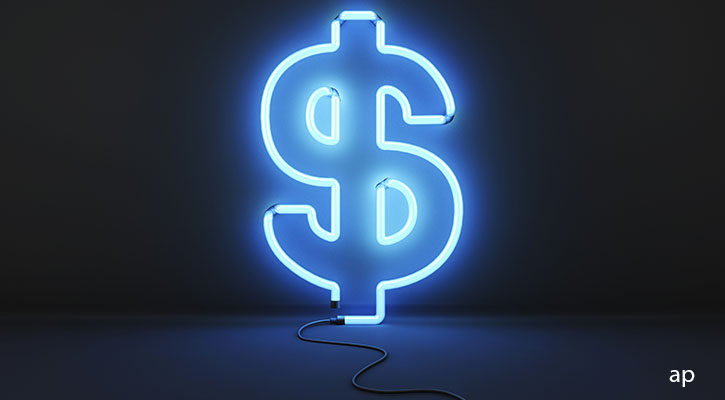In 2009, fund investors had a lot more to be happy about than in 2008, when major stock market indices were down more than 30% and bonds (other than Treasuries) also lost significant ground. After hitting bottom on March 9, stocks took off once the financial system stabilised, posting bigger gains than just about anybody expected at the beginning of the year. The FTSE 100 Index ended the year with a 22% gain, and foreign stocks, especially those from emerging markets, were up even more. Bonds and bond funds also rebounded strongly in 2009, with the largest gains coming from 2008's biggest losers, such as high-yield bonds.
In a rising market like this, there's usually a tendency for investors to pile into whatever has been hot, even though their timing often turns out to be terrible (as with technology stocks in early 2000). On the other hand, most of the best-performing fund categories of 2009 were among the worst-performing categories of 2008, a year that's still fresh in everybody's mind.
Of course, nobody knows for sure what's going to happen in the markets in 2010 and beyond. But it's possible to get some perspective by looking back to 2003, a year that was similar in many ways to 2009. In both cases we were coming out of a recession and a terrible bear market caused by the popping of an investment bubble. Doing so suggests a couple of pieces of advice that are worth remembering, not just now but after any period of extreme market conditions.
Don't get too excited by hot areas
The best-performing fund categories of 2009 were generally among the riskiest, part of a general rebound in investors' risk appetites after the previous year's flight to safety. The Latin American stock category topped the charts last year with an average return of 116%, followed by diversified emerging markets, Pacific/Asia ex-Japan stock, technology, and equity precious metals, each with average gains topping 50%. Among fixed-income categories, high-yield was tops with an average 47% gain. The big question is whether those categories are poised to be among the leaders again in 2010 or whether they've already seen their best days.
A look at the 2003-04 period shows how difficult it is to answer such a question. The list of top-performing fund categories that year was remarkably similar to 2009's--Latin America stock was on top with a 62% average return, followed by equity precious metals and technology. In 2004, Latin America stock was once again the top-performing category, gaining 39%. But equity precious metals was actually the worst-performing category in 2004 (other than bear-market funds), with an average loss of 8%. Technology funds, after their big 2003 run-up, posted mediocre single-digit returns in each of the next three years, badly trailing the broader market.
Of course, economic and market conditions aren't the same now as they were six years ago, so there's no guarantee that these categories will behave the same way in 2010; in fact, they probably won't. What this example really shows is the importance of diversifying your portfolio; despite the confident predictions of experts, nobody knows which asset classes or categories are going to do well next, so it's best to hedge your bets and avoid putting too much money in one area, even if it seems like a sure thing.
Don't get too hung up on one-year fund returns
If we look at individual funds within a given category or asset class, the winners and losers followed a similar pattern in 2009. Risky funds tended to do well, while those that avoid big risks and keep their cards close to their chest tended to lag. Among the US large-growth funds that Morningstar covers, for example, the top performer was Pin Oak Aggressive Stock, which is quite aggressive (as its name implies), and the worst performer was Chase Growth, a conservative fund that owns high-quality growth stocks with economic moats and reasonable valuations.
Yet whether a fund was a winner or a loser in 2009 didn't necessarily have much to do with its long-term prospects; both groups included some very good funds and some bad or questionable funds. Of Morningstar's 194 Fund Analyst Picks, 33 had returns in their categories' top 10% in 2009, including such big names as Oakmark and FPA Capital. On the other hand, 13 Analyst Picks ranked in the bottom 10% of their categories in 2009, including such prominent funds as Brandywine and Sequoia. The reasons for these funds' good or bad performance varied quite a bit and didn't always fit into the risky-conservative pattern; Oakmark, for example, is generally pretty conservative but benefited in 2009 from its media and financial holdings.
For some further perspective, we looked at funds in the nine categories of the Morningstar Style Box (large value, small blend, etc.) with at least one manager who has been around for at least seven years (that is, since the beginning of 2003), and ranked them according to their 2003 performance. Those who finished in the bottom decile of their categories in 2003 have an average 10-year percentile ranking of 33, meaning they've ranked in the top one third of their categories over the past decade. The funds that finished in the top decile of their categories in 2003 had an average 10-year ranking of 31--virtually identical. These groups did perform differently in specific years; the top-decile 2003 funds tend to be riskier, so they also tended to outperform in 2009, while the bottom-decile 2003 funds also tended to underperform in 2009. Over time, though, those differences averaged out. The lesson here is one we've recounted before--look at fund performance over the long term, and don't get too concerned about any one year.
To find out more about other common mistakes that investors make, read our Good funds can make a bad portfolio article.
David Kathman, CFA is a Morningstar fund analyst.























